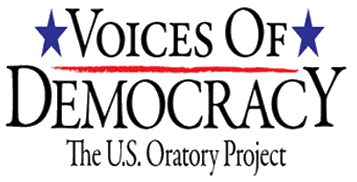JOHN L. LEWIS, “SPEECH AT THE FIFTY-FIFTH ANNUAL CONVENTION OF THE AMERICAN FEDERATION OF LABOR” (16 OCTOBER 1935)
Classroom Activities
- Members of the working class had little power to change their working conditions. How does Lewis articulate this to the AFL leadership? How does Lewis portray himself in regards to the workers he represented?
- One of the over-arching tensions within the labor movement was how to handle skilled versus unskilled labor. Is there a difference in the way skilled versus unskilled labor should be treated? Why did the AFL fight so hard to keep this distinction? What types of jobs would be considered “skilled” and what types of jobs would be considered “unskilled”? To what extent is this a meaningful distinction?
- Lewis was well-known for his harsh rhetoric that insulted not only employers but also other leaders within the labor movement. Generally we consider name-calling and invective “out of bounds” for a public speaker. Why might a leader nonetheless risk being labeled “uncivil” by hurling insults at his opposition both inside and outside the labor movement? Is there a place for name-calling in democracy, or should we always avoid this style of speaking? Is it ever acceptable to use invective and insults in a public forum?
- Other labor leaders like Mary Harris “Mother” Jones and Eugene Debs actually insulted the very same workers for whom they were fighting. Why might they have done that? How does Lewis’ strategy differ from Debs’ and Jones’?
Student Research
- Research the labor laws of the Great Depression era. How were employees typically treated? What were the typical hours, wages, and working conditions in U.S. factories? What laws were in place, if any, to protect workers from employer abuses? How have conditions since the 1930s improved? What role did labor unions play in bringing about that change?
- Some employers forced their workers to live in company-owned housing and paid them only with company vouchers (i.e., currency that was valid only in the company-owned stores). Scholars sometimes refer to this as “corporate paternalism.” Research the reasons why corporations owned the housing, the stores, and, in some cases, the entire town. What arguments did corporations use to justify this practice?
- Research the effects of mass production and unskilled types of labor upon the working class. As products became more easily produced with less skill, a practice known as “scientific management” (or “Taylorism”) emerged. What was this practice? What were its pros and cons?
- The coal industry was incredibly significant to the nation’s manufacturing sector. John L. Lewis therefore wielded tremendous power as the president of the nation’s largest union of coal miners. Research the relationship among the coal mine owners, the steel industry, the United Mine Workers of America, and President Franklin Delano Roosevelt.
Citizenship Resources
- The U.S. labor movement fought hard to improve conditions and wages. Public opinion in recent decades, however, has shifted against labor unions in many cases. In what ways are labor unions no longer needed? In what ways are they still needed?
- Labor union membership has steadily declined in the last four decades. In 1973, about 26 percent of the workforce was represented by a labor union. Today, that number is below 12 percent. As union membership has declined, working-class wages have stagnated and even declined. Research the effects of contemporary labor laws upon working-class wages. What are “right to work” states?
- Several states have recently limited the rights of public workers (i.e., police, public school teachers, prison guards, etc.) to join and be represented by unions. Do current labor laws protect the rights of public workers to join unions? What is the difference between a public and a private worker? Should there be any distinction in terms of labor rights based on that public/private distinction?
- Research the ways in which the U.S. economy has changed since the Great Depression era. For example, manufacturing is now a less significant source of jobs for unskilled labor. How has this affected the working class? What other changes are significant, and what impact do those changes have on social mobility?
